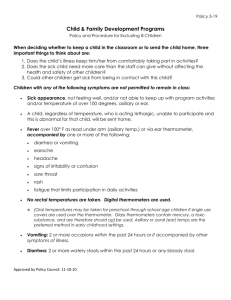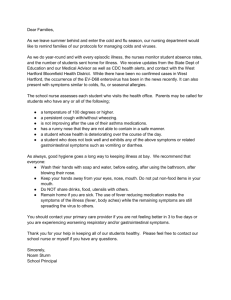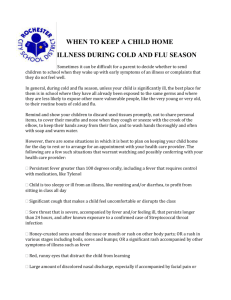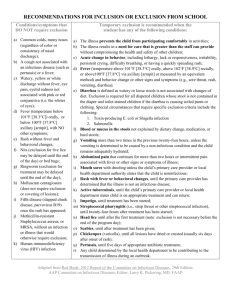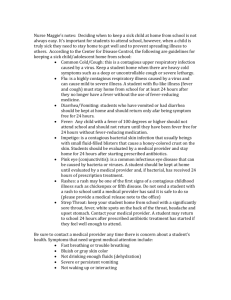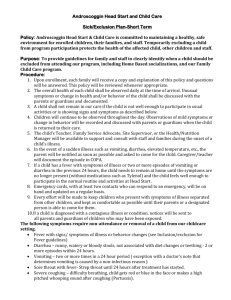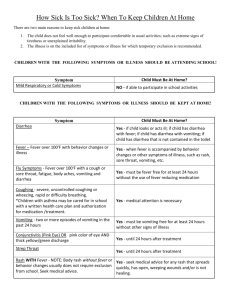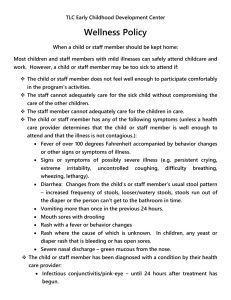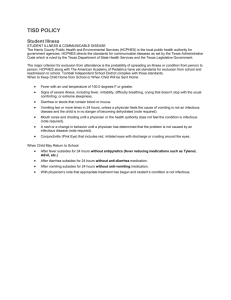SCPS Health Services - Sterling Park Elementary
advertisement
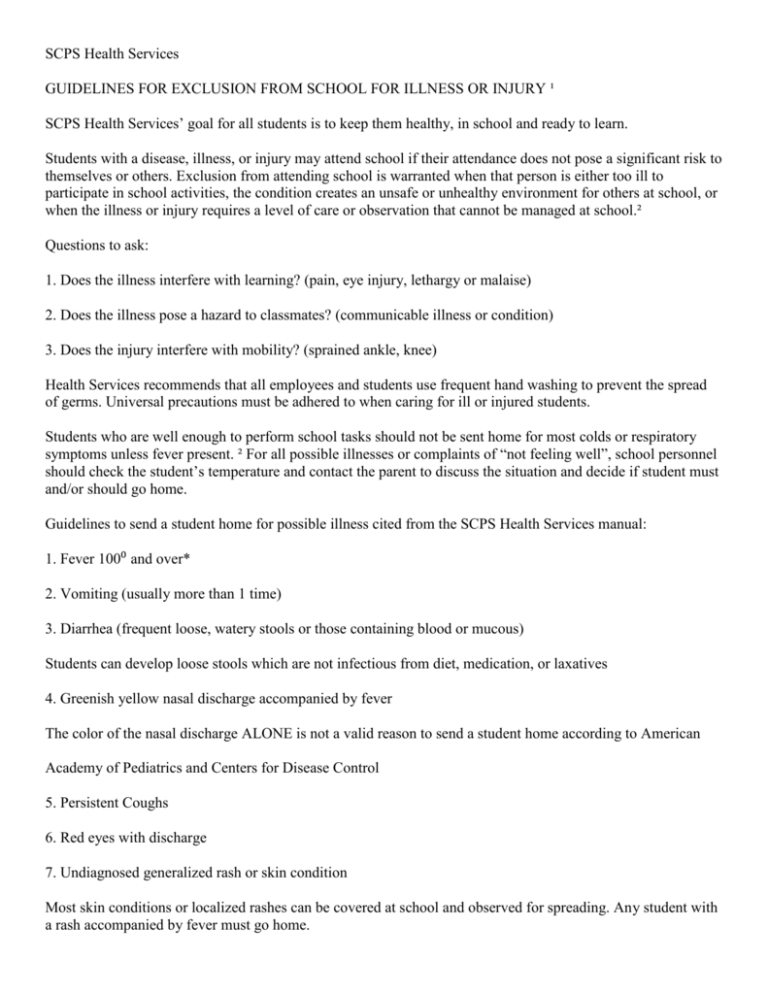
SCPS Health Services GUIDELINES FOR EXCLUSION FROM SCHOOL FOR ILLNESS OR INJURY ¹ SCPS Health Services’ goal for all students is to keep them healthy, in school and ready to learn. Students with a disease, illness, or injury may attend school if their attendance does not pose a significant risk to themselves or others. Exclusion from attending school is warranted when that person is either too ill to participate in school activities, the condition creates an unsafe or unhealthy environment for others at school, or when the illness or injury requires a level of care or observation that cannot be managed at school.² Questions to ask: 1. Does the illness interfere with learning? (pain, eye injury, lethargy or malaise) 2. Does the illness pose a hazard to classmates? (communicable illness or condition) 3. Does the injury interfere with mobility? (sprained ankle, knee) Health Services recommends that all employees and students use frequent hand washing to prevent the spread of germs. Universal precautions must be adhered to when caring for ill or injured students. Students who are well enough to perform school tasks should not be sent home for most colds or respiratory symptoms unless fever present. ² For all possible illnesses or complaints of “not feeling well”, school personnel should check the student’s temperature and contact the parent to discuss the situation and decide if student must and/or should go home. Guidelines to send a student home for possible illness cited from the SCPS Health Services manual: 1. Fever 100⁰ and over* 2. Vomiting (usually more than 1 time) 3. Diarrhea (frequent loose, watery stools or those containing blood or mucous) Students can develop loose stools which are not infectious from diet, medication, or laxatives 4. Greenish yellow nasal discharge accompanied by fever The color of the nasal discharge ALONE is not a valid reason to send a student home according to American Academy of Pediatrics and Centers for Disease Control 5. Persistent Coughs 6. Red eyes with discharge 7. Undiagnosed generalized rash or skin condition Most skin conditions or localized rashes can be covered at school and observed for spreading. Any student with a rash accompanied by fever must go home. 8. Open wounds that cannot be covered and/or drainage that cannot be contained with bandage 9. Unusual or change in behavior (ex. Normally active → lethargy, excessive crying) *When presenting with influenza like symptoms, a student should be fever free for 24 hours without the use of fever reducing medication before returning to school.³ References 1. Seminole County Public Schools. School Health Services Manual 2. American Academy of Pediatrics, National Association of School Nurses, Center of Disease Control et. al., Health, Mental Health and Safety Guidelines for Schools, 2004 3. Center for Disease Control (2006). H1N1 Flu. Retrieved August 2, 2010 from http://www.cdc.gov/h1n1flu/guidance/exclusion.htm
